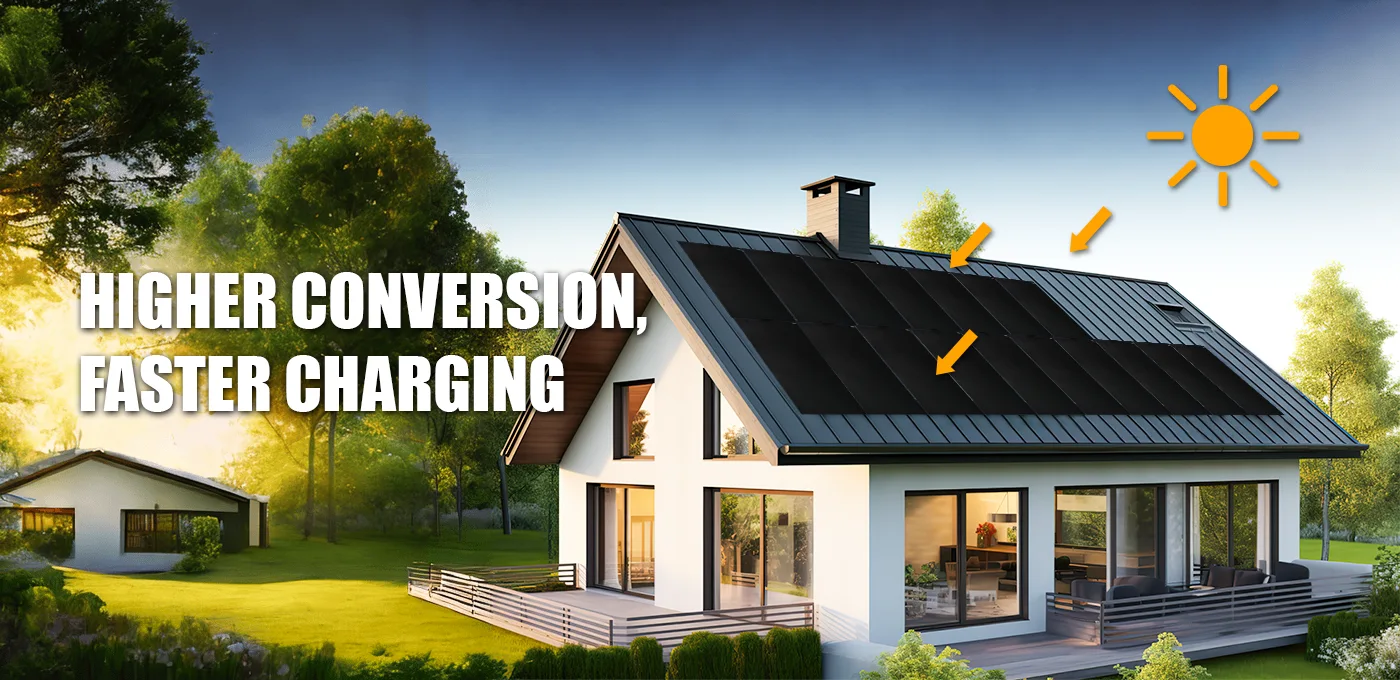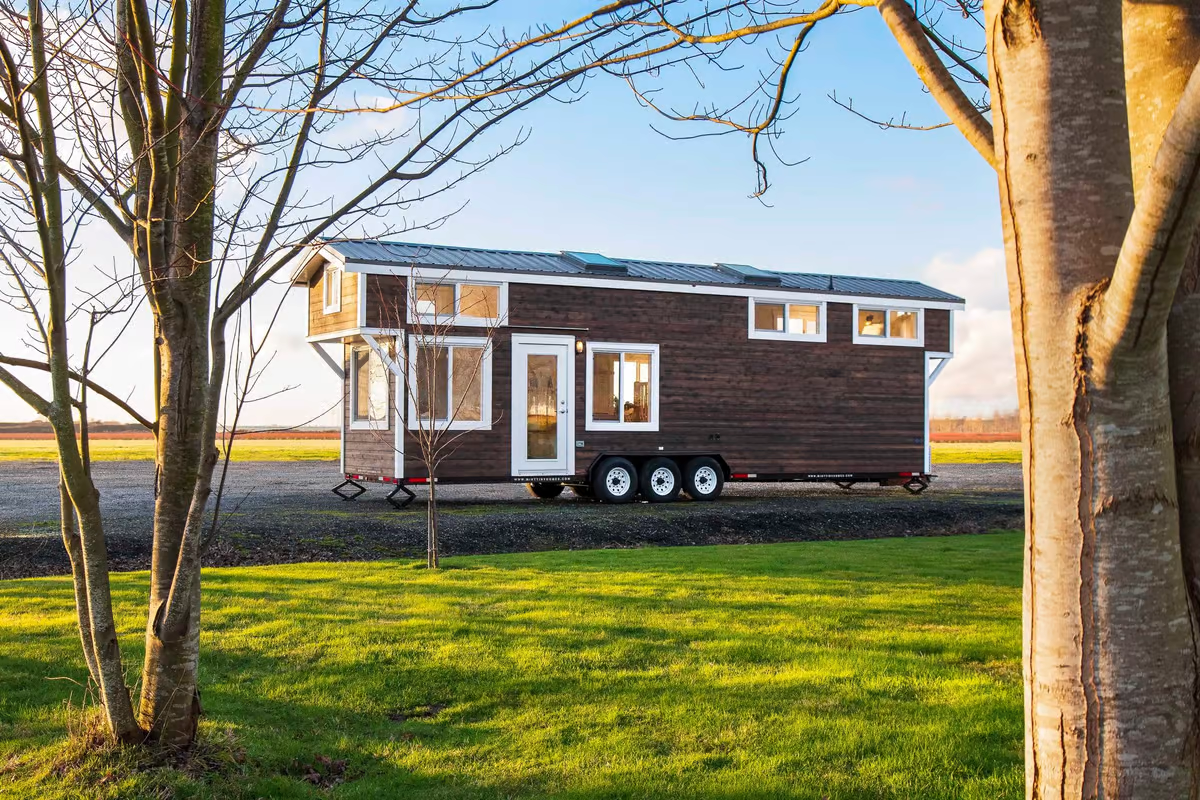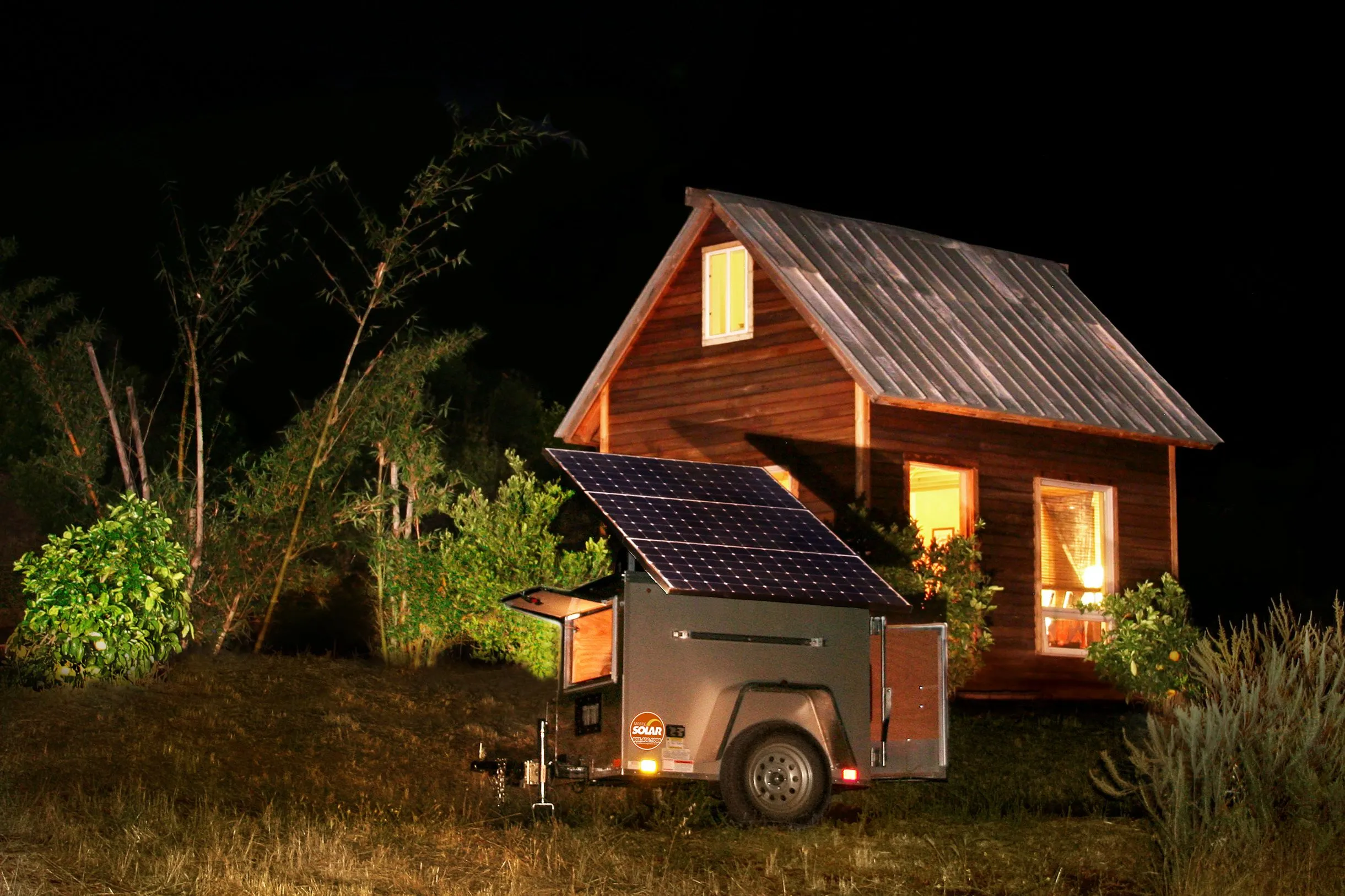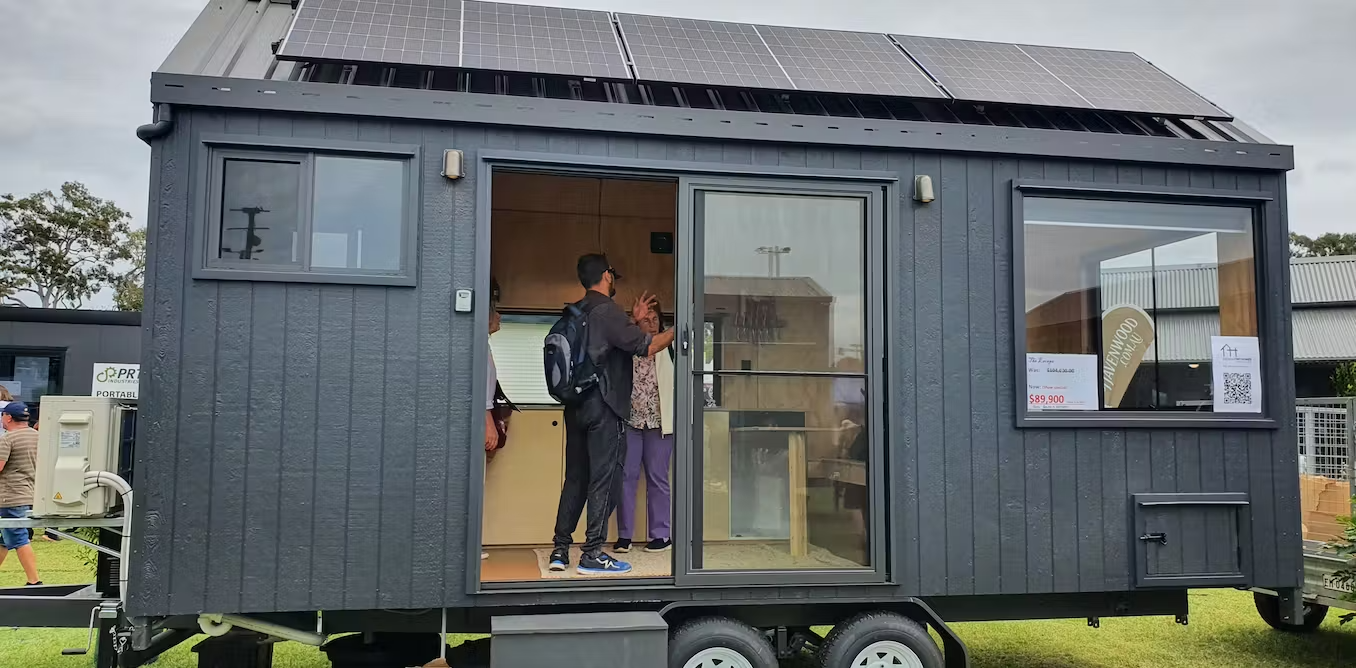Tiny houses and mobile homes are both relatively small home options that focus on compact design and creative use of space and installation of solar panels is a great energy solution.
This is the latest definitive guide on solar panels for tiny house if you want to learn:
- why you should install solar panels for tiny houses, what the benefits and challenges are
- how many solar panels you’ll need to meet your electricity needs, and their cost and payback period
- whether you should choose a roof-mounted or ground-mounted solar panel system, and how to install and maintain them
- Whether you need batteries or other energy storage devices to store excess solar power, their types and prices
- whether you are eligible for any government subsidies or tax incentives to reduce the cost of your solar investment
This post will provide you with detailed answers to these questions, so let’s explore solar panels for tiny house!
The Pros and Cons of installing solar panels for tiny house
| Pros | Cons |
| Cost Savings on Utility Bills | High Initial Costs |
| High Return on Investment | Expensive Batteries |
| Clean Renewable Energy | Space Requirements |
| Increased Energy Independence | Inverter Placement Issues |
| Customization |
The benefits of installing solar panels are numerous, and the main reasons that drive small house owners to get solar panels are also: saving money on electricity and being eco-friendly.
Pros #1: Cost Savings on Utility Bills
A smaller house with a more streamlined design will cost less for utilities, and when coupled with the installation of solar panels, it can significantly reduce a small house’s electric bill, if not eliminate most or all of it. This savings is especially noticeable if you live in an area with high energy consumption, expensive electricity, and plenty of sunlight.
Pros #2: High Return on Investment
The total payback period for solar panels is usually around 5-10 years in most states in the United States. Installing solar panels on a tiny house has a relatively short payback period and can pay for itself much faster. In addition, with a variety of solar financing programs available to help cover the upfront costs, a solar-powered tiny house is much easier to get started.
Pros #3: Clean Renewable Energy
Using sunlight to generate clean, emission-free green energy helps reduce environmental impact and carbon footprint. Green and sustainable electricity can help the environment.
Pro #4: Increased Energy Independence
Off-grid solar systems can be built for small houses using solar panels, reducing dependence on the grid and providing more independence and freedom in power usage. In the event of a power outage, solar energy can act as a backup power source, which is one of the key reasons why grid-tied houses choose to install solar panels.
Pro #5: Customization
Modular design and system customization are supported by the solar panel, which is more friendly to users with small living areas and small power consumption, and the solar panels can be customized and the appropriate system can be built according to the specific house area and power consumption demand.

Every coin has two sides, and installing solar panels on a tiny house is no exception. The disadvantages we mentioned are mainly due to the cost of installation and space considerations:
Cons #1: High Initial Costs
The initial capital investment, as with most solar-powered installations, is still high despite incentives and tax credits, and purchasing solar panels as well as a system kit will likely cost $3,000 to $6,000.
Cons #2: Expensive Batteries
Batteries and energy storage currently on the market are relatively expensive, and their return on investment is far less than that of solar panels.
Cons #3: Space Requirements
The limited space in a tiny house can make it challenging to install the required solar panels. More consideration may need to be given to the choice of mounting method or the purchase of high-efficiency solar panels to increase the amount of power generated per unit area.
Cons #4: Inverter Placement Issues
Placing inverters in tight spaces can be tricky. Factors such as temperature control and noise need consideration. Micro-inverters are an alternative but come at a higher cost.
How many solar panels do I need for my tiny house?
How many solar panels you need to meet electricity needs, as well as their cost and payback period, depends on the size, location, mobility, and budget of your cabin, as well as your electricity habits and equipment. In general, you can refer to the following formula to estimate the number of solar panels you need:
Number of Solar Panels = Your Daily Electricity Consumption (kWh) / Daily Power Generation of Solar Panels (kWh)
Your daily electricity usage can be obtained by calculating the power (watts) and usage time (hours) of all your appliances.
For example, if you use a 300-watt refrigerator for 8 hours, a 100-watt light bulb for 4 hours, a 30-watt cell phone charger for 2 hours, and a 240-watt laptop for 4 hours per day, then your daily electricity usage is:
(300 x 8) + (100 x 4) + (30 x 2) + (240 x 4) = 4,140 watt-hours = 4.14 kilowatt-hours
The amount of daily power generated by solar panels depends on their power rating (watts) and the solar radiation in your area (kWh/m2/day). For example, if you are using 300 Watt solar panels and the solar radiation in your area is 5 kWh/square meter/day, then the daily power production of your solar panels is:
300 x 5 = 1,500 watt-hours = 1.5 kWh
So the number of solar panels you need is:
4.14 / 1.5 = 2.76
This means that you need at least 3 solar panels for your electricity needs.
Of course, this is just an ideal situation, you need to consider some other factors such as the efficiency of the solar panels, inclination, direction, shading, temperature, cloud cover, season, sunshine hours, etc., which will affect the actual amount of electricity generated by the solar panels. Therefore, you should install more solar panels just in case.
The cost and payback period of solar panels also depends on your specific situation, such as the brand, model, quality, and warranty of the solar panels you choose, as well as the solar energy market in your area, government subsidies, tax incentives, and electricity prices. 、
Generally speaking, solar panels cost between $0.50 and $1 per unit, and between $1 and $3 to install, which means you’re looking at about $1.50 to $4 for every watt of solar panels you install.
So if you need to install three 300-watt solar panels, you’re looking at about $1,350 to $3,600. Of course, this is just a ballpark range and you can get a more accurate quote by asking your local solar provider or using some online solar calculators.
The payback period for solar panels is the amount of time it will take for you to recoup your solar investment through savings on your electric bill. It also depends on how much electricity your solar system produces, how much electricity you use, your electricity rates, and whether you can sell your excess electricity to the grid.
For example, if your solar system saves you $500 per year on your electric bill and your solar investment is $3,000, then your payback period is:
3,000 / 500 = 6 years
This means it will take you 6 years to recoup your solar investment of installing solar panels for tiny house. Of course, this is just a simple example, you also need to consider the maintenance costs of your solar system, changes in the price of electricity, the performance decay of your solar system, and other factors.
Solar panels for tiny house: Roof-mounted or ground-mounted?
There are pros and cons to both roof-mounted and ground-mounted solar panels for tiny houses. Here are some factors to consider before deciding which option is best for you:
Space
Roof-mounted solar panels can save space, especially if you have a small lot or want to park your tiny house in different locations. However, you can only fit a few panels on the roof of a tiny house, which may not be enough to meet your energy needs.
Ground-mounted solar panels can allow you to have more panels and generate more power, but they require more land and may not be suitable for mobile tiny houses.
Cost
Roof-mounted solar panels are generally cheaper and easier to install than ground-mounted ones, as they do not need additional structures or foundations. However, roof-mounted panels may also require additional modifications to the roof, such as reinforcement, ventilation, or waterproofing, which can increase the cost and complexity of the installation.
Ground-mounted solar panels may have higher upfront costs, but they can also offer more flexibility and customization, such as adjusting the tilt and orientation of the panels to optimize the solar output.
Performance
Roof-mounted solar panels are dependent on the shape, size, and orientation of the roof, which may not be ideal for capturing the maximum amount of sunlight. They may also be affected by shading from nearby trees, buildings, or other obstacles.
Ground-mounted solar panels can be placed in the most optimal location and angle to maximize solar exposure and efficiency. They can also be easier to clean and maintain, as they are more accessible and less prone to damage from weather or debris.
Aesthetics
Roof-mounted solar panels can blend in with the roof and create a sleek and modern look for your tiny house. They can also enhance the value and appeal of your tiny house, as they demonstrate your commitment to sustainability and eco-friendliness.
Ground-mounted solar panels can be more visible and conspicuous, which may not suit your personal preference or the style of your tiny house. They can also create more clutter and obstruction on your land, which may affect the landscaping and design of your outdoor space.
Excess power storage options
If you want to utilize solar panels to power your cabin, you may need batteries or other energy storage devices to store excess solar power for when there isn’t enough sunlight. The type and price of battery or energy storage equipment depends on your power needs, space constraints, budget, and personal preferences. Below is a description of some common types of batteries or energy storage devices:
Lead-acid batteries: Lead-acid batteries are a traditional type of energy storage battery that uses lead and sulfuric acid as electrodes and electrolyte, which has the advantages of low cost, high capacity, and easy maintenance, but also has the disadvantages of being heavyweight, short lifespan, fast self-discharge, and high pollution. The price of lead-acid batteries is generally between 100-300 RMB/kilowatt hour (kWh).
Lithium-ion batteries: Lithium-ion batteries are a new type of energy storage batteries that use lithium and other materials as electrodes and electrolytes, and have the advantages of light weight, high capacity, long life, high efficiency, and environmental protection, but they also have the disadvantages of high cost, poor safety, and temperature sensitivity. The price of a lithium-ion battery is generally between 500-1000 RMB/kWh.
Supercapacitor: A supercapacitor is a special kind of capacitor, that can store a large amount of charge, and has the advantages of fast charging and discharging, long life, high efficiency, temperature stability, etc., but it also has the disadvantages of small capacity, high cost, unstable voltage and so on. Supercapacitors are generally priced between $1000-2000/kWh.
In addition to these common energy storage devices, there are some other energy storage technologies, such as compressed air energy storage, liquid flow batteries, flywheel energy storage, etc. They have their advantages and disadvantages and are suitable for different occasions and needs. You can choose the right energy storage device according to your specific situation to improve the efficiency and reliability of your solar power utilization.
Government Subsidies & Tax Incentives
If you are in the US, you may be eligible for some government subsidies or tax incentives to reduce your solar investment costs. As I mentioned in my previous response, there is a federal solar investment tax credit (ITC) that allows you to deduct 26% of the cost of installing a solar system from your federal taxes in 2021 and 2022. The ITC will drop to 22% in 2023 and 10% in 2024. There are also state and local incentives that vary by location, such as rebates, grants, loans, net metering, and property tax exemptions.
The federal solar tax credit, also known as the Investment Tax Credit (ITC), allows you to claim a percentage of the cost of your solar system on your federal income taxes. The current rate is 30% for systems installed between 2022 and 2032, and it will decrease to 26% in 2033 and 22% in 2034. The tax credit expires in 2035 unless Congress renews it.
The Solar for All grant competition, which was launched by the Biden-Harris administration in June 2023, is to fund residential solar programs that lower energy costs for low-income and disadvantaged families and advance environmental justice. The competition will award up to $7 billion to states, territories, Tribal governments, municipalities, and eligible nonprofits to create and expand low-income solar programs that provide financing and technical assistance.















